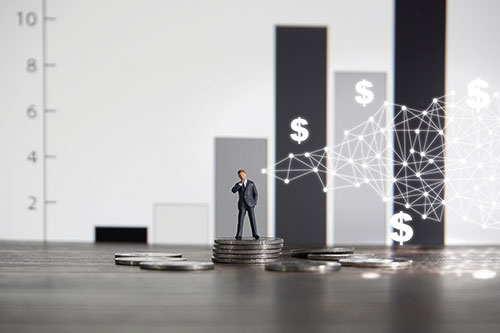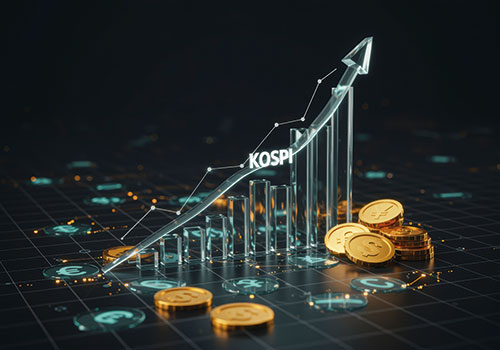in Issue & Trend
Korean Issue Highlights
Korean Issues Timeline

Korean Issues Timeline
July
1st
South Korea’s Exports Hold Steady Despite Trump’s “Tariff Barrage”
Despite the high tariffs imposed during the second Trump administration, South Korea’s exports in the first half of the year remained robust, totaling USD 334.7 billion, a figure similar to the same period last year. Buoyed by growing demand for AI and data centers, semiconductor exports reached a record high, serving as a key pillar of the economy. While the auto sector was hit hard by the 25% tariffs, the popularity of hybrid vehicles helped mitigate the decline in exports. However, in the second half, factors such as U.S. tariff negotiations, IT demand, and oil prices may worsen export conditions due to rising uncertainty.
4th
Government Allocates KRW 179.3 Billion to Become a Top 3 AI Powerhouse
The government has earmarked KRW 179.3 billion in supplementary funding with the goal of positioning South Korea among the world’s top three AI powers. The Ministry of Science and ICT plans to invest KRW 65.6 billion in AI projects in the public, medical, and manufacturing sectors; KRW 30 billion in advanced AI semiconductors (NPUs); and KRW 33.7 billion in information security and AI talent development. In addition, a new KRW 50 billion AI innovation fund will be established to further support industrial and commercial applications.
24th
South Korean Economy Grows 0.6% in Q2
South Korea’s economy grew by 0.6% in the second quarter compared to the previous quarter, slightly exceeding the Bank of Korea’s forecast of 0.5%. This better than expected result was driven by a reduction in political uncertainty, a rebound in consumer sentiment, and strong semiconductor exports. In the second half, however, export momentum may slow due to U.S. tariffs, making domestic consumption recovery and a continued trend of interest rate cuts the key variables for sustained economic growth.

31st
Korea-U.S. Tariff Deal Reached: Tariffs Lowered from 25% to 15%, USD 350 Billion Investment Agreed
The United States and South Korea reached a comprehensive trade agreement to reduce reciprocal tariffs from 25% to 15%, while Korea pledged a KRW 350 billion investment in the U.S. The central pillar of the deal is the Korea–U.S. shipbuilding cooperation project, known as MASGA, with USD 150 billion earmarked for shipbuilding, MRO, and related areas. The remaining USD 200 billion will be deployed in strategic industries such as semiconductors, nuclear energy, secondary batteries, and biotechnology. However, differing views on the implementation plan have put the reduced tariff rates on hold until final adjustments have been made.

August
19th
Over Half of Korean Workers Use Generative AI on the Job
According to a survey by the Bank of Korea, 63.5% of Korean workers have used generative AI, and 51.8% utilize it actively in the workplace. Employees using AI spend an average of 5 to 7 hours per week interacting with AI tools, and their total working hours have decreased by an average of 3.8%. The central bank estimates that the productivity gains from AI could potentially raise GDP by 1.0%p.

22nd
New Administration Announces “Real Growth” Strategy with AI at the Core
The Lee Jae Myung administration has unveiled its new economic policy under the banner of “Real Growth.” The vision includes placing Korea among the world’s top 3 AI powers, achieving 3% potential growth, and positioning Korea as one of the world’s top 5 economic powers. AI is the central growth engine to boost real GDP growth by 1-2% and potential growth by up to 3%. The government has identified 30 flagship AI transformation and ultra-innovation projects, to be launched in the second half of the year. A KRW 210 trillion supplementary budget will be invested over the next five years in support of the strategy.
24th
“Yellow Envelope Law” Passed by National Assembly
The National Assembly has passed the so-called “Yellow Envelope Law” (amendments to Articles 2 and 3 of the Trade Union and Labor Relations Adjustment Act) with 183 out of 186 members in attendance voting in favor. The amendment includes provisions to expand the legal definition of “employer” to include principal employers in subcontracted or indirect employment arrangements, and limit damage claims against unions for legitimate strike actions. The law will go into effect six months after promulgation.
28th
Bank of Korea Holds Base Rate at 2.50%
The Bank of Korea kept its base interest rate unchanged at 2.50%, signaling a continued cautious stance on monetary policy. Although the government’s household debt measures announced on June 27 have somewhat cooled the real estate market, lingering instability in Seoul prompted a prudent approach. The central bank also raised its 2025 GDP growth forecast for Korea from 0.8% to 0.9%.
31st
Lee Administration Finalizes KRW 728 Trillion “Super Budget”
The Lee Jae Myung administration unveiled a KRW 728 trillion national budget for next year, marking a KRW 54.7 trillion increase from this year and an 8.1% growth in total government spending. The budget prioritizes countermeasures for economic slowdown, low birthrates, population aging, and AI-led transformation. The AI budget has been tripled to KRW 10.1 trillion, while the R&D budget has been increased by 19.3% to KRW 35.3 trillion.
September
5th
Arrest of Korean Workers at U.S. Plant Highlight Need for Special Work Visas
A total of 475 Korean workers, including those dispatched to support the Hyundai Motor Group and LG Energy Solution joint venture plant in Georgia, USA, were detained by U.S. Immigration and Customs Enforcement. They had entered the country under ESTA or B1 business visas and were deemed to be working illegally. In response, the Korean industry is calling for the establishment of a special work visa for Korean professionals as a long-term solution.

14th
KOSPI Hits Record High: 1 in 10 Listed Companies Reach 52-Week Peak
The KOSPI index continued its record-breaking rally, with 245 companies (9.2%) of all listed firms hitting a 52-week high. The rise was driven by strong performance in large-cap semiconductor stocks, fueled by expectations of increased AI infrastructure investment. In addition, financial stocks benefiting from policy support and food stocks riding the wave of K-content popularity also hit record levels. Shipbuilding stocks gained on optimism surrounding the “The Make American Shipbuilding Great Again” (MASGA) Project.

15th
Korea Faces Risk of Falling Behind Taiwan in Per Capita GDP
Korea’s projected per capita GDP for 2025 is USD 37,430, while Taiwan is expected to reach USD 38,066, potentially surpassing Korea for the first time in 22 years. Taiwan’s 8% GDP growth in Q2, driven by the AI semiconductor boom and strategic government support, starkly contrasts with Korea’s 0.6% growth. Taiwan is projected to exceed USD 40,000 in per capita GDP next year, while Korea is expected to reach just USD 38,947.

16th
Government Announces Major Deregulation Plans for AI, Autonomous Vehicles, and Robotics
To enhance global competitiveness in emerging sectors such as AI, autonomous driving, and robotics, the Korean government has announced major regulatory reforms. At the first Strategic Meeting on Core Regulatory Reform, key topics included regulatory overhaul in AI and robotics and measures to support corporate growth. The initiative aims to dismantle bureaucratic silos and conflicts of interest that have hindered innovation, with a broader goal of fostering a forward-looking industrial ecosystem. Plans include relaxing data usage constraints under the Personal Information Protection Act and expanding zones for autonomous vehicle testing. These efforts are part of a broader strategy to elevate Korea to AI G3 status while also accelerating corporate growth and reforming restrictive regulations on businesses.
September
22nd
September Exports Up 13.5%, but Daily Average Exports Down 10.6%
From September 1 to 20, Korea’s total exports rose 13.5% year-on-year, reaching a record high, largely due to an increase in the number of working days. However, daily average exports, adjusted for the working-day effect, fell 10.6%, with exports to the U.S. down 16.4%, signaling the growing impact of U.S. tariffs. While semiconductors (up 27%) and ships (up 46.1%) performed well, automobile exports declined 9.2% due to the continued 25% tariff.

24th
OECD Maintains 2025 Growth Outlook for Korea at 1.0%
The OECD kept Korea’s 2025 GDP growth forecast unchanged at 1.0%, following three downward revisions since last December. This figure is slightly higher than projections by the Korean government and Bank of Korea (0.9%), and global institutions such as the IMF and KDI (0.8%). The OECD expects Korea’s ongoing economic recovery to gain momentum, with growth rebounding to 2.2% in 2026.

26th
Korea to Open Foreign Exchange Market 24/7 by 2026
The government announced plans to open the domestic foreign exchange market 24 hours a day and establish an offshore Korean won settlement system by next year. The aim is to improve accessibility for foreign investors and encourage capital inflows. However, some experts voiced concerns about potential increased exchange rate volatility.

30th
U.S. to Impose 100% Tariff on Pharmaceuticals
The Trump administration declared it would impose a 100% tariff on branded and patented pharmaceuticals starting October 1, without a grace period. The move is seen as a hardline measure to reshore pharmaceutical manufacturing. Korea may be at a disadvantage, as it lacks formal documentation of most-favored-nation (MFN) status for pharmaceuticals, unlike the EU and Japan. The exact scope of the tariffs remains unclear. Korean pharmaceutical companies are scrambling to mitigate the impact of the new tariffs through local manufacturing, inventory relocation, and strengthened partnerships.
